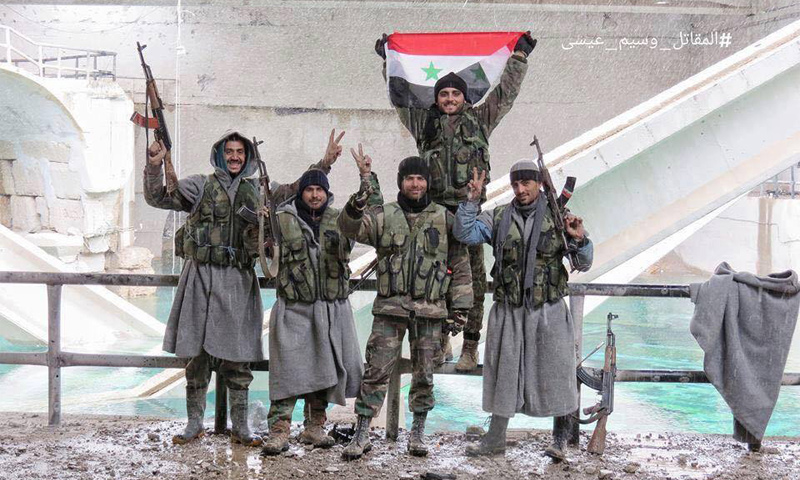



Enab Baladi – Exclusive
The final chapters of Wadi Barada have ended with the beginning of implementation of the latest agreement reached between the al-Assad regime and the city’s leaders on 19 January. It imposes a ceasefire, the return of residents to their villages, the entry of repair teams to the spring of Ain al-Fijah and the expulsion of fighters and their families to northern Syria.
On Saturday morning, 28 January, opposition factions withdrew from the spring of Ain al-Fijah and nearly 20 members of the Republican Guard entered along with Red Crescent volunteers. They raised the flag of the Syrian regime over the facility, marking the implementation of the agreement.
On Saturday afternoon, the Red Crescent and International Red Cross buses began to arrive in the town of Ain al-Fijah to evacuate the wounded to the neighboring town of Deir Qanoun. At the same time, maintenance and repair teams prepared to enter the Ain al-Fijah facility in preparation for the entry of buses into the area in order to evacuate opposition fighters and their families to northern Syria.
According to Enab Baladi’s sources in Wadi Barada, five buses have arrived in the town of Deir Qanoun to evacuate fighters and their families to the city of Idlib on Saturday night or Sunday morning. The sources confirmed that the number of fighters is over 700, without mentioning the number of displaced civilians.
Enab Baladi had obtained the terms of the recent agreement in Wadi Barada, which mandates the entry of the work teams to the Ain-al Fijah spring facility. Simultaneously, fighters and factions from Jeroud will gather in the villages of the region on the condition that the situations of the fighters who wish to stay are settled. The names of those who refuse the settlement are to be registered, and they will be transported to the city of Idlib with UN assistance, accompanied by the Red Cross.
According to the clauses of the agreement, al-Assad’s forces and allied militias would leave the village of Basimah after a certain period. They would maintain their presence in the positions they reached in the town of Ain-al Fijah on the condition that the towns of Basimah and Ain al-Fijah be reconstructed within a specific period of time.
The Wadi Barada settlement largely resembles the settlements reached in Damascus’ countryside, which was based on the expulsion of fighters and their families to Idlib province and the regime asserting control over their areas. These settlements were reached in the cities and towns of Daria, Modhamiyyat al-Sham, al-Tell, Kanaker, Khan Sheikh, Zakya, Sasa, Qudsayya and Hama in the past few months.
Al-Assad’s forces, backed by the Lebanese Hezbollah and Dar Qalamoun militia, waged an extensive ground and air attack on the area of Wadi Barada late last December. This caused the death and injury of dozens of civilians and massive physical damage to the Barada spring facility. The regime is seeking to take over the area despite the agreement to a ceasefire in Syria, with Turkish and Russian sponsorship, signed on 29 December of last year.
if you think the article contain wrong information or you have additional details Send Correction